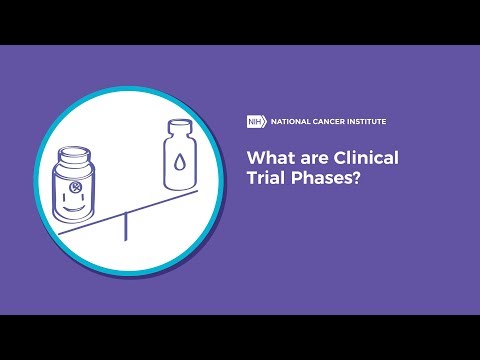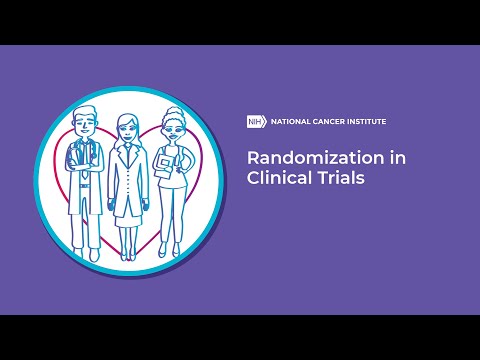Who is eligible for clinical trials?
Every clinical trial has requirements that must be met for you to join. These requirements are called eligibility criteria.
Common eligibility criteria address things such as your:
- health
- medical history
- family medical history
- risk factors
- age
- treatment history
- tumor’s genetic changes
These criteria help reduce the medical differences among people in the trial, reduce the risk that people will be harmed, and limit people in the trial to those most likely to benefit.
When people taking part in a trial are alike in specific ways, researchers can be more certain that the results are due to the intervention or drug being tested and not to other factors.
Phases of clinical trials
Clinical trials to test new cancer treatments involve a series of steps, called phases. Depending on the results of each phase, a treatment may move to testing in the next phase.
The Four Phases of Clinical Trials
Early clinical trial phases (phases 1 and 2) test for safety, such as what the side effects are and what a safe dose is. Later phases (phase 3 and 4) compare the treatment to current standard treatments.
In a phase 1 clinical trial, researchers figure out whether a new treatment is safe, what its side effects are, whether people can tolerate it, and the highest dose that people can tolerate. These trials are done in a small group of people (around 15 to 30). They also make sure a treatment affects the cancer.
A phase 2 clinical trial includes more people (50 to 100) to see if the new treatment seems to work against the cancer, such as by shrinking tumors or slowing their growth. Researchers want to see how the new treatment affects the body and fights cancer. In this phase, teams continue to study safety, including short-term side effects.
In a phase 3 clinical trial, researchers compare the treatment to the current standard therapy to see which works better. They also compare the side effects of the treatments. Participants are randomly assigned to one of the treatments to ensure that any differences are real and not the result of differences in the people in each group. Phase 3 trials include large numbers of people (from 100 to several thousand) to make sure that the result is valid.
Results from phase 1–3 trials are used to make decisions about approving new treatments or existing treatments for new conditions by agencies like the US Food and Drug Administration (FDA).
A phase 4 clinical trial looks at long-term safety and effectiveness that take place after a new treatment has been approved by the FDA and is available to the public. Treatment effectiveness and safety are monitored in large, diverse populations. More information is gathered as more people use the drug or device over a longer period of time.
Randomization and bias in clinical trials
Clinical trial randomization is the process of assigning people by chance to groups that receive different interventions or drugs in later phase trials. A computer is most often used to assign people to groups.
In the simplest trial design, the investigational group receives the study intervention or drug and the control group receives standard treatment.
At several points during and at the end of the clinical trial, researchers compare the groups to see which intervention or drug is more effective or has fewer side effects.
Randomization, in which people are assigned to groups by chance alone, helps prevent bias. Bias occurs when a trial's results are affected by human choices or other factors not related to the treatment being tested.
For example, if doctors could choose which patients to assign to which groups, some might assign healthier patients to the treatment group and sicker patients to the control group even without meaning to. This might make the treatment group appear better than the control group even if it isn’t. Randomization helps avoid biases of this type.
If you are thinking about joining a clinical trial that includes randomization, it is important to understand that neither you nor your doctor can choose which group you will be assigned to.
Placebos in clinical trials
Placebos are rarely used in cancer treatment clinical trials. In most cases, a group of participants will receive the new treatment, and another group will receive the already approved standard treatment. Researchers will then compare the two treatments to see if the new treatment will become the new standard.
If placebos are used, you always will be told ahead of time and can ask questions before deciding to join the trial. The use of placebos in a clinical trial will be covered in the consent form. Learn about consent forms for clinical trials.
When are placebos used in clinical trials? They are used when no standard treatment for a cancer exists. Or they may be used in a trial that compares standard treatment plus a placebo, with standard treatment plus the study treatment.
Placebos may be used in other types of trials, such as prevention trials.
Research team members
Designing and running a clinical trial requires the skills of many experts. Different sites of the same trial may set up their teams differently. Typical team members and their duties include:
| Title | Role | Responsibility |
|---|---|---|
| Principal investigator | Supervises all aspects of a clinical trial |
|
| Research nurse | Helps take care of the patients during a clinical trial |
|
| Data manager | Manages the collection of data throughout the clinical trial |
|
| Staff physician or nurse | Helps take care of the patients during a clinical trial |
|
Where cancer clinical trials take place
Cancer clinical trials take place in cities and towns across the United States and throughout the world.
They take place in doctors’ offices, cancer centers, medical centers, community hospitals and clinics, and veterans’ and military hospitals. A single trial may take place in one or two places, or at hundreds of different sites.
Trials that are funded in full or in part by NCI, include trials that take place at NCI-Designated Cancer Centers and at the NIH Clinical Center in Bethesda, Maryland.



